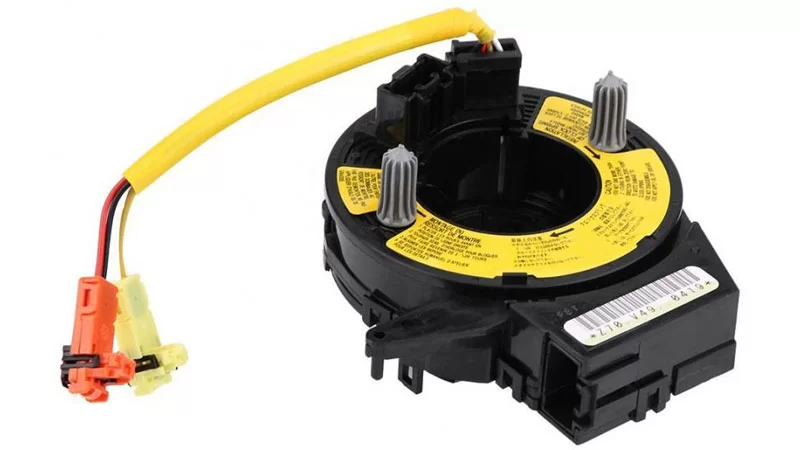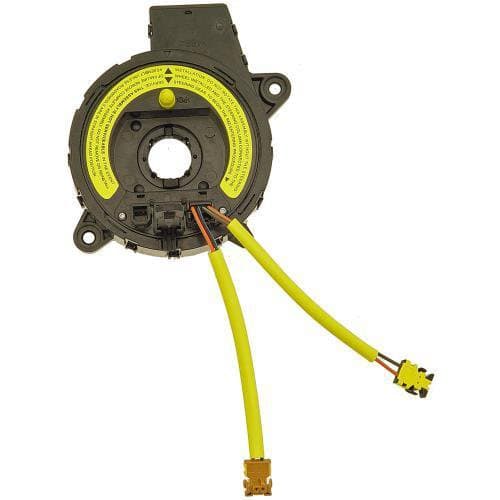Driving with a bad clock spring is possible, but it’s not advisable due to safety concerns. The clock spring is an essential component in your vehicle’s steering column, playing a crucial role in maintaining electrical connections for the airbag, horn, cruise control, and other steering wheel-mounted controls. When the clock spring fails, these features may not function correctly, posing a risk to your safety.
Why Driving with a Bad Clock Spring Is Dangerous
A clock spring is a spiral-wound component located within your steering wheel. It maintains the electrical connection to your steering-wheel-mounted systems like the airbag, horn, and cruise control. While driving with a malfunctioning clock spring might seem like a minor issue, it can pose serious safety hazards.

Airbag Malfunction
One of the biggest dangers of driving with a bad clock spring is that it can prevent your airbags from deploying in a collision. The clock spring provides the electrical connection that triggers the airbag in an accident. If this connection is broken, your airbag system won’t work.
Loss of Horn and Controls
A faulty clock spring can also cut power to your steering wheel’s horn and other controls. This means you may not be able to warn other drivers of your presence or make necessary adjustments while driving.
What are the signs of a bad clock spring?
Here are some common signs that might indicate a failing clock spring:
| Symptom | Description |
|---|---|
| Airbag Light | The airbag warning light on your dashboard illuminates. |
| Horn Issues | Your horn stops working or works inconsistently. |
| Erratic Controls | Steering wheel controls (audio, cruise control) malfunction or become unresponsive. |
| Grinding Noise | You hear a grinding or clicking noise when you turn the steering wheel. |
Should I replace my clock spring?
If you experience any of the symptoms listed above, it’s strongly recommended that you have a qualified mechanic inspect your vehicle and replace the clock spring if necessary. Continuing to drive with a faulty clock spring is a major safety risk. Don’t gamble with your safety – have the issue addressed as soon as possible.
What is a Clock Spring and Its Function?
A clock spring is a coil of wire housed within the steering wheel that enables electrical connections while the steering wheel turns. This component is crucial for the functionality of the airbag system, horn, and other steering wheel controls. The clock spring ensures that these features work properly regardless of the steering wheel’s position.
Risks of Driving with a Faulty Clock Spring
The primary risk of driving with a bad clock spring is the potential failure of the airbag system. In the event of an accident, the airbag might not deploy, increasing the risk of injury. Additionally, the malfunctioning horn can be a safety hazard, as it’s a critical tool for alerting other drivers or pedestrians in emergency situations.
Diagnosing and Fixing a Bad Clock Spring
To diagnose a faulty clock spring:
- Remove it from the steering column.
- Use a digital multimeter set to resistance reading to test its functionality. Inconsistent readings during this test can indicate a problem.
For fixing or replacing the clock spring:
- Disconnect the vehicle’s battery and wait for about 20 to 30 minutes.
- Remove the steering wheel assembly, followed by the airbag and clock spring.
- Replace with a new clock spring and reassemble all parts.
Replacement Costs
The cost of replacing a clock spring can vary significantly, ranging from $100 to $800, depending on the vehicle model and labor costs. The part itself usually costs between $50 and $200. Some vehicles may require additional programming or calibration after replacement, potentially increasing labor costs.







